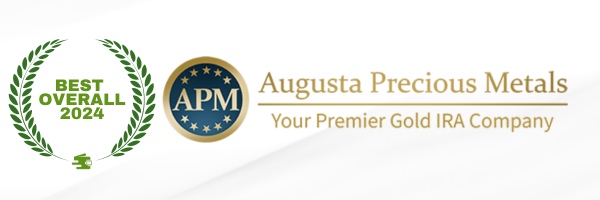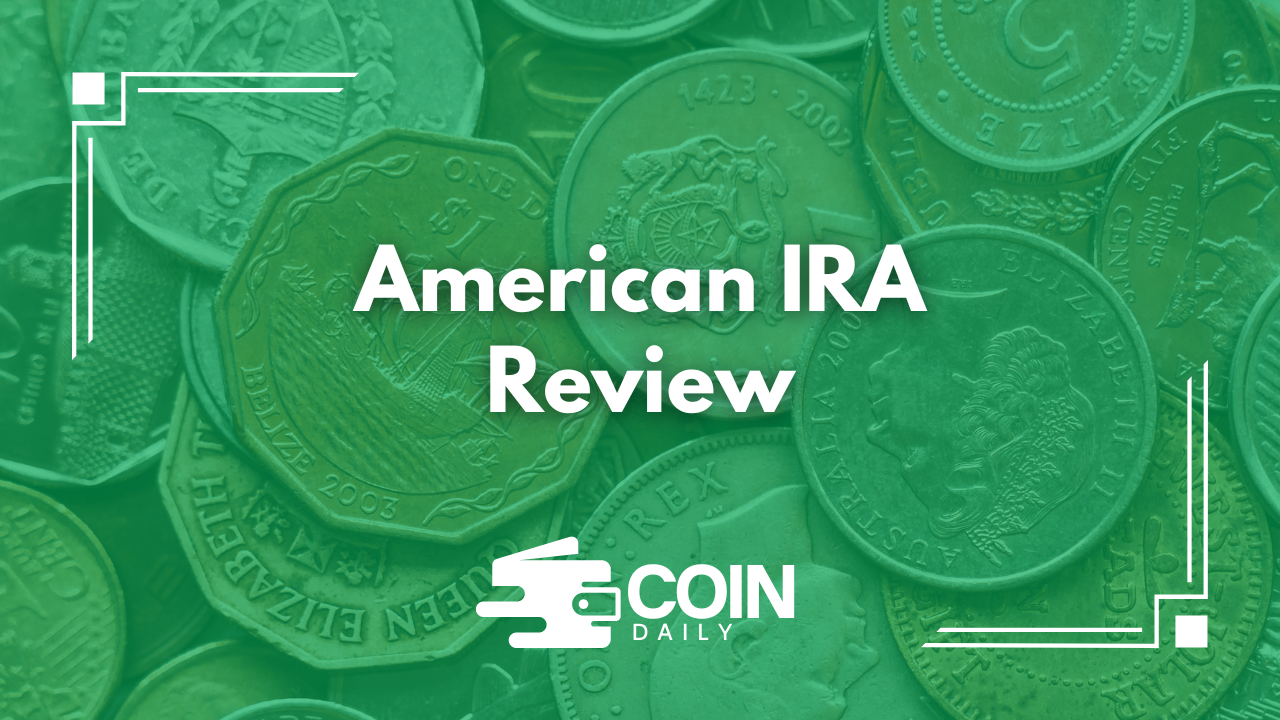When planning for retirement, it is essential to understand the available options. An American IRA provides a distinct opportunity for individuals seeking to manage their retirement savings with a degree of flexibility and potential tax benefits.
This article aims to define what an American IRA is, outline its advantages—including tax incentives and investment control—and discuss the associated risks. Additionally, it offers guidance on the process of opening an account and selecting an appropriate custodian.
Whether individuals are considering this retirement option or exploring alternatives, they will find valuable insights to facilitate well-considered choices.
What Is American IRA?
The American IRA represents a specialized form of self-directed individual retirement account (IRA) that enables investors to exert greater control over their retirement savings. This type of IRA enables account holders to explore a diverse array of investment options beyond conventional assets such as stocks and bonds.
By utilizing the American IRA, individuals can effectively diversify their portfolios, potentially enhance their investment returns, and benefit from substantial tax advantages. This approach allows investors to align their investment strategies with their long-term financial objectives and risk tolerance, thereby promoting overall financial independence and security.
What Are the Benefits of American IRA?
The advantages of an American IRA are extensive, rendering it a compelling choice for individuals pursuing effective strategies for retirement savings and wealth accumulation.
Key among these benefits are substantial tax advantages, which facilitate tax-deferred growth. This structure enables investors to optimize their retirement income while also providing the flexibility of self-directed investment opportunities, including alternative assets such as real estate and precious metals.
1. Tax Advantages
One of the most significant tax advantages of an American IRA is the opportunity for tax-deferred growth. This allows investors to increase their retirement savings without immediate tax implications, thereby facilitating a more substantial accumulation of wealth over time. Depending on the type of account selected, such as a Roth IRA or a traditional IRA, individuals can leverage various tax strategies that align with their specific financial objectives.
This distinctive feature can substantially enhance their financial trajectory, particularly when considering the effects of compounded returns. While traditional IRAs offer tax deductions on contributions, Roth IRAs enable tax-free withdrawals during retirement, presenting a strategic choice based on one’s current and anticipated future tax brackets.
The flexibility inherent in an American IRA allows for effective wealth management, enableing clients to tailor their investment strategies to optimize tax benefits as they progress through different life stages. Consequently, integrating these accounts into a comprehensive financial plan can significantly enhance long-term security and prosperity.
2. Diversification of Investments
The capability to diversify investments represents a significant advantage of utilizing an American IRA, as it enables individuals to allocate their retirement savings across a broad spectrum of assets, including real estate, precious metals, and other alternative investments. This approach not only mitigates overall risk but also enhances the potential for returns, which is essential for achieving financial security and aligning with long-term retirement objectives.
By investigating these diverse investment options, individuals can tailor their portfolios in accordance with their risk tolerance and prevailing market conditions. For instance, incorporating real estate investments can yield passive income and potential appreciation, while precious metals frequently act as a safeguard against inflation.
Integrating traditional stocks and bonds with alternative assets can foster a more resilient investment strategy. Prioritizing diversification not only aids in managing volatility but also positions investors to capitalize on various market cycles, thereby advancing them toward their goals of financial independence and a secure retirement.
3. Potential for Higher Returns
Investors utilizing an American IRA frequently encounter the potential for higher returns compared to traditional retirement accounts due to their ability to invest in a more extensive array of assets, including high-growth opportunities that are often unavailable in conventional retirement portfolios. By strategically selecting investment vehicles that align with current market trends, individuals can significantly enhance their overall account performance and wealth accumulation.
This flexibility allows investors to engage with a diverse range of investment categories, such as real estate, commodities, and private equity, which frequently outperform standard stocks and bonds under various market conditions. By diversifying their portfolios in this manner, investors can not only achieve greater potential gains but also mitigate the risks associated with market volatility.
Long-term investment strategies, such as dollar-cost averaging into high-yield assets, can further amplify returns, facilitating sustained growth over time.
As a result, an American IRA serves as a valuable tool for prudent, forward-looking individuals aiming to optimize their financial future.
4. Control Over Investments
One of the defining characteristics of an American Individual Retirement Account (IRA) is the level of control it offers investors over their retirement funds. This enables individuals to implement personalized investment strategies that are in alignment with their financial goals and risk tolerance.
The self-directed IRA structure allows individuals to make informed decisions regarding their investments, whether they pertain to traditional assets or alternative investments, thereby ensuring optimal account management.
By assuming responsibility for their portfolios, investors can explore opportunities that reflect their unique circumstances and aspirations. This degree of involvement not only enhances their understanding of the financial landscape but also enables them to adapt their strategies as market conditions change.
When investors are directly engaged in their retirement planning, they can more readily adjust their distributions to accommodate life changes or unforeseen expenses, ultimately contributing to a more fulfilling and secure retirement experience.
Check Out the Best Gold IRA Company of 2024
There are over 200+ gold IRA companies in the US and among all of them, I believe Augusta Precious Metals is the best one so far.

Augusta Precious Metals ranks as the #1 gold IRA company in the US. And that’s for good reason.
They have some of the best product catalogs with gold, silver, platinum, and palladium products to offer. But the main highlight is their dedicated web conference and the added focus on client education.
Augusta has an A+ rating on BBB, 1000+ client testimonials, and has been awarded “Most Transparent Company” in 2023 by Investopedia.
No other company puts as much focus on educating their clients about the different aspects of gold IRAs as they do.
My own experience with them was amazing to say the least.
However, their minimum investment requirement is $50,000 which limits the number of people who can open a gold IRA with them. Still, if you have the budget, you shouldn’t look elsewhere.
What Are the Risks of American IRA?
The American IRA provides numerous benefits; however, it is accompanied by inherent risks that investors must meticulously evaluate. One such risk is market volatility, which can adversely affect the performance of various asset classes and potentially lead to financial losses.
Furthermore, investors may face challenges associated with limited liquidity, as certain alternative investments may not be readily sold or converted into cash, thereby impacting overall financial flexibility.
1. Market Volatility

Market volatility presents a significant risk to investors utilizing an American IRA, as fluctuations in asset values can lead to unpredictable investment performance and impact overall retirement savings. It is essential to understand the economic trends that contribute to market volatility in order to develop effective investment strategies that mitigate these risks.
Such volatility often results in increased anxiety among investors who are concerned about the potential loss of their hard-earned capital. To effectively navigate these challenging market conditions, it is imperative for investors to remain informed about market dynamics and to establish diversified portfolios that can withstand fluctuations across various market environments.
By incorporating a mix of asset classes, including stocks, bonds, and alternative investments, individuals can adopt a balanced approach aimed at reducing overall investment risk while maintaining strong performance metrics. Additionally, having a clear exit strategy and regularly rebalancing their portfolios can further enhance their capacity to adapt to changing market landscapes, ensuring that their retirement objectives remain attainable even in uncertain times.
2. Potential for Losses
Investors in an American IRA encounter the possibility of incurring losses, particularly when engaging in high-risk investment strategies or alternative assets that may not yield expected returns. It is essential for individuals to assess their risk tolerance to ensure alignment with their long-term retirement objectives and to implement strategies that can mitigate the impact of significant market downturns.
By comprehensively understanding their risk appetite, individuals can make informed decisions regarding the allocation of their assets across various investment vehicles. Diversification, for example, is a critical component of effective portfolio management, as it distributes investments across multiple sectors and asset classes to reduce the potential for losses.
Incorporating more stable, lower-risk options alongside higher-risk investments enables investors to pursue growth while maintaining a safety net. Additionally, conducting regular reviews and rebalancing of portfolios in response to changing market conditions and personal financial circumstances further strengthens this protective strategy, allowing for timely adjustments that align with their evolving risk tolerance.
3. Limited Liquidity
Limited liquidity presents a significant concern for investors utilizing an American IRA, particularly when engaging with certain alternative investment vehicles that may not provide immediate access to cash. This situation can complicate retirement distributions and affect financial planning, making it essential for investors to carefully consider their asset allocation and plan for future liquidity requirements.
When liquidity is restricted, investors may find themselves unable to access funds as needed during retirement, potentially forcing them to liquidate assets at inopportune moments. Such scenarios not only disrupt the meticulously crafted financial strategy but also threaten the long-term viability of their retirement portfolio.
Given these considerations, it becomes imperative to adjust asset allocation to include a mix of liquid assets alongside investments that have the potential for appreciation over time. Strategic planning in this area can ensure that cash flow is readily available during distribution phases, thereby enabling retirees to meet their financial obligations without undue stress.
How to Open an American IRA Account?
Establishing an American IRA account entails a clear and systematic process that commences with the selection of a reputable custodian specializing in self-directed accounts. This custodian plays a pivotal role in guiding individuals through the essential steps of the IRA rollover process and ongoing account management.
The choice of custodian is of paramount importance, as they will facilitate investment transactions, ensure compliance with IRA regulations, and provide valuable educational resources aimed at optimizing retirement savings.
What Are the Different Types of American IRA Accounts?
American IRA provides a range of account options designed to address the diverse needs of investors. These include traditional IRAs, Roth IRAs, SEP IRAs, and SIMPLE IRAs, each characterized by unique features and benefits tailored to different financial circumstances and retirement objectives.
It is essential to comprehend the distinctions among these account types to implement effective retirement strategies that optimize tax advantages and contributions.
1. Traditional IRA
A traditional IRA is a well-established retirement account that permits individuals to make tax-deductible contributions. This arrangement provides immediate tax benefits and allows investments to grow tax-deferred until retirement age, at which point qualified distributions are taxed as ordinary income. This type of IRA is particularly suited for individuals aiming to reduce their current taxable income while preparing for their future retirement needs.
With annual contribution limits that are adjusted each year, it is essential for savers to monitor their allowable contributions, as this directly impacts their overall retirement strategy. The tax advantages associated with this account type are particularly attractive to individuals in higher income brackets who may seek to optimize their deductions.
Traditional IRAs can play a significant role in a comprehensive retirement plan by serving as a financial safety net during retirement. This ensures that individuals can access funds for essential expenses without incurring substantial tax penalties, thereby preserving their financial well-being in later life.
2. Roth IRA
The Roth IRA presents a distinctive advantage through tax-free growth on investments, enabling individuals to contribute with after-tax dollars and benefit from tax-free withdrawals during retirement, provided that specific conditions are satisfied. This type of account can be especially advantageous for younger investors who anticipate higher income levels in the future, as it aligns well with long-term financial planning objectives and retirement distributions.
The flexibility inherent in the Roth IRA permits account holders to withdraw their contributions at any time without incurring penalties, thus rendering it an accessible option for addressing emergency financial needs.
Eligibility requirements for the Roth IRA are relatively straightforward, generally encompassing modified adjusted gross income limits that may influence contribution levels. For the tax year 2023, individuals are permitted to contribute up to $6,500 annually, or $7,500 if they are aged 50 or older, thereby promoting a robust savings strategy.
This combination of tax-free growth, penalty-free access, and the advantages defined by the IRS establishes the Roth IRA as a fundamental component of comprehensive retirement planning.
3. SEP IRA

A SEP IRA, or Simplified Employee Pension IRA, is specifically designed for self-employed individuals and small business owners, allowing for higher contribution limits compared to traditional or Roth IRAs. This feature facilitates effective retirement planning by providing greater flexibility in contribution amounts, making it an ideal choice for those with variable income streams.
For the year 2023, individuals may contribute up to 25% of their net earnings, with a maximum limit set at $66,000, significantly enhancing their retirement savings potential. Eligibility for a SEP IRA is straightforward; any self-employed individual or small business with one or more employees may participate, thereby simplifying the pathway to retirement.
Additionally, SEP IRAs offer considerable tax advantages, as contributions are tax-deductible, and the growth within the account is tax-deferred until retirement withdrawals commence. Overall, the SEP IRA emerges as a valuable instrument within the retirement planning framework, ensuring that self-employed individuals have robust options to secure their financial future.
4. SIMPLE IRA
The SIMPLE IRA, or Savings Incentive Match Plan for Employees, is a retirement savings option specifically designed for small businesses. It allows both employees and employers to contribute, thereby enhancing retirement savings opportunities. This account type streamlines the process of retirement planning for small firms while offering significant tax benefits for all parties involved.
The annual contribution limit for employees is set at $15,500, with individuals aged 50 and over permitted to make catch-up contributions of an additional $3,500 annually. Employers have the option to match employee contributions up to 3% of their salary or to make a flat 2% contribution for all eligible employees.
This flexibility positions the SIMPLE IRA as an attractive alternative to other retirement plans, such as the 401(k), which typically involve more complex regulations and higher administrative costs. By promoting a culture of saving, the SIMPLE IRA enables both employers and employees to work toward a financially secure future.
How to Choose the Right American IRA Custodian?
Selecting an appropriate IRA custodian is a crucial step in effectively managing an American IRA. Custodians play a vital role in overseeing account management, facilitating transactions, and ensuring compliance with IRA regulations.
Choosing a custodian that provides exceptional customer service, transparent fee structures, and a diverse array of investment options can significantly improve the overall retirement experience and enhance financial planning.
What Are Some Alternatives to American IRA?
While the American IRA offers a valuable option for retirement savings and investment flexibility, individuals may also consider several alternatives, including:
- 401(k) plans
- real estate investments
- individual stocks and bonds
- traditional savings accounts
Each alternative presents its own set of benefits and limitations, which makes it essential for individuals to evaluate these options in light of their personal retirement goals and financial circumstances.
1. 401(k) Plans
401(k) plans are employer-sponsored retirement savings accounts that enable employees to allocate a portion of their salary toward retirement savings, frequently accompanied by employer matching contributions, which further enhance retirement savings potential. These plans offer considerable tax benefits, rendering them a favored option among American workers.
Participants generally have the ability to demand their contributions from their taxable income, leading to reduced tax liabilities during their employment years. Investments within a 401(k) grow on a tax-deferred basis until withdrawal, making this a compelling long-term savings strategy.
It is important to note that 401(k) plans typically impose annual contribution limits established by the IRS, which may restrict high earners. Conversely, American Individual Retirement Accounts (IRAs), while also offering tax advantages, present different contribution requirements and greater flexibility, enabling diverse strategies tailored to personal financial goals and individual circumstances.
2. Real Estate Investments
Real estate investments represent a compelling alternative to traditional retirement accounts, offering the potential for rental income and long-term asset appreciation, which can significantly enhance retirement savings and foster financial independence. By incorporating real estate into an investment portfolio, individuals can achieve greater asset diversification and mitigate market risk.
The tangible nature of properties provides a sense of security that fluctuating stock markets often lack. As market conditions vary, the consistent cash flow generated from rental properties can serve as a reliable income stream during retirement, alleviating some of the challenges associated with relying solely on IRAs and other retirement vehicles.
It is essential for investors to carefully consider these benefits alongside potential risks, including property management responsibilities, maintenance costs, and market volatility. A thorough understanding of these dynamics is crucial for making informed decisions that align with long-term financial objectives.
3. Individual Stocks and Bonds
Investing in individual stocks and bonds represents a traditional method for constructing a retirement portfolio, which can either complement or serve as an alternative to American IRA options. This strategy provides direct exposure to market performance and potential capital gains, allowing investors to customize their portfolios based on their financial objectives and risk tolerance.
However, this approach is not without its challenges. Selecting individual stocks necessitates extensive research and a comprehensive understanding of the companies and industries involved, as market fluctuations can lead to unforeseen losses.
While bonds typically offer a more stable income stream and tend to be less volatile than stocks, they are not without risks. Changes in interest rates can significantly impact their value.
Consequently, it is imperative for seasoned investors to carefully evaluate how these assets align with their overall retirement strategy, considering their investment horizon and prevailing market conditions to create a balanced and effective portfolio.
4. Savings Accounts

Savings accounts represent a low-risk option for individuals aiming to save for retirement without experiencing the volatility associated with other investment vehicles. They provide liquidity and modest interest earnings, serving as a secure place for cash reserves. Although these accounts may not offer substantial growth potential, they hold a significant position in comprehensive financial planning and risk management.
In the realm of retirement planning, the primary advantage of savings accounts is their accessibility, enabling account holders to withdraw funds easily in the face of unforeseen expenses or emergencies. This liquidity is particularly vital during retirement, a period when financial stability can often be uncertain.
It is essential to acknowledge that while savings accounts provide a safety net, they frequently do not keep pace with inflation or generate substantial returns when compared to stocks or bonds. A balanced approach that incorporates the use of savings accounts alongside other investment options can lead to a more diversified and potentially profitable retirement portfolio, addressing both the necessity for security and the aspiration for growth.
Frequently Asked Questions
What is American IRA Review?
American IRA Review is a company that specializes in self-directed retirement account services. They help individuals and businesses manage their IRAs and other retirement accounts to achieve their financial goals.
What services does American IRA Review offer?
American IRA Review offers a variety of services, including setting up self-directed IRAs, assisting with rollovers and transfers, providing investment education and consultation, and facilitating the purchase of alternative assets within IRAs.
Are there any fees associated with using American IRA Review?
Yes, American IRA Review charges annual account maintenance fees, transaction fees, and investment fees. These fees may vary depending on the type of account and investments chosen.
What types of retirement accounts can be self-directed through American IRA Review?
American IRA Review can help individuals and businesses self-direct traditional IRAs, Roth IRAs, SEP IRAs, SIMPLE IRAs, and Solo 401(k) plans.
Can I invest in any type of asset with my self-directed IRA through American IRA Review?
While traditional IRAs limit investments to stocks, bonds, and mutual funds, self-directed IRAs through American IRA Review can invest in a wider range of assets, including real estate, private equity, precious metals, and more.
How do I get started with American IRA Review?
You can get started with American IRA Review by filling out an online contact form or calling their toll-free number. A representative will guide you through the process of setting up your self-directed IRA and choosing the right investments for your retirement goals.



